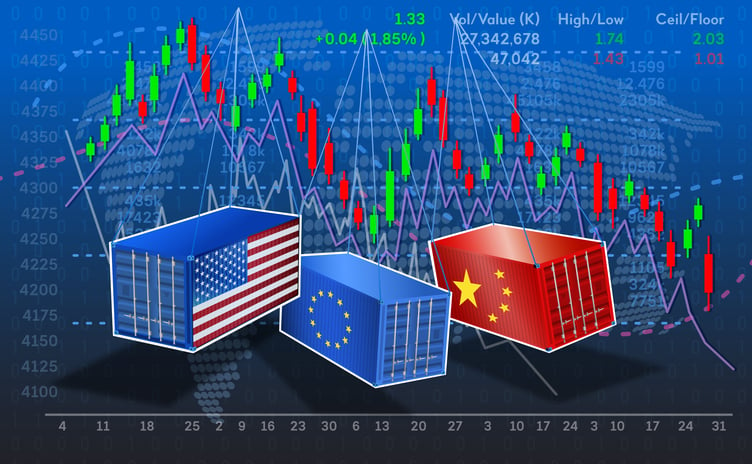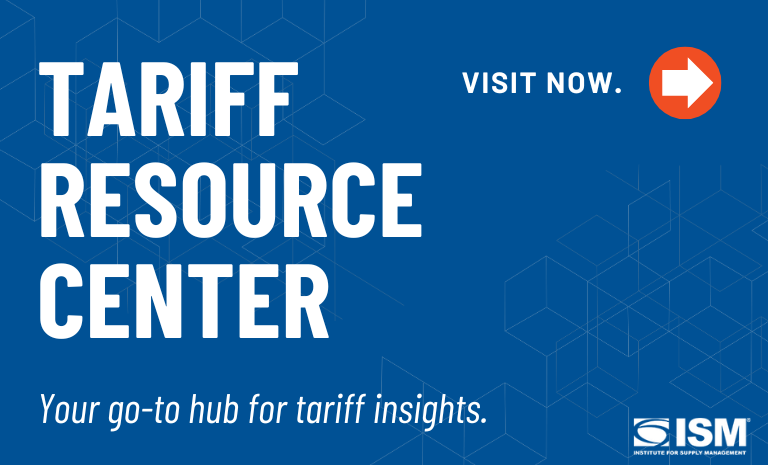Tariffs Impact Showing Up in Inflation Data

The impacts of the trade war — dialed up further by President Donald Trump, as he threatened Mexico and the European Union with 30-percent tariffs, on top of a flurry of levies announced last week — were slow to show up in many parts of the U.S. economy.
That might have changed on Tuesday. The U.S. Bureau of Labor Statistics’ consumer price index (CPI) of goods and services revealed that annual inflation rose to 2.7 percent in June, an increase from 2.4 percent the previous month. Core CPI, which excludes energy and food prices, ticked up to 2.9 percent, compared with 2.8 percent in May.
While sentiment was mixed among analysts on the degree of impact, the consensus was that tariffs were evident in the data. Many duty-affected commodities had cost increases in June; more on that later.
“This marks the first inflation report where tariffs are beginning to show up materially in key categories — from appliances and furnishings to apparel and groceries,” Daniel Hornung, senior fellow at the Massachusetts Institute for Technology and former deputy director of the National Economic Council, told USA Today in a written comment. “But it is unlikely to be the last: Tariffs will likely increase prices more dramatically in the months ahead, as businesses work through their inventories from pre-tariff imports.”
The CPI and producer price index (PPI), though they ticked up in May, had been cooler than expected in recent months. Markets have hovered near all-time highs as investors continue to bet that the White House’s actions on tariffs won’t match its words.
“Whatever Trump says is irrelevant, because that’s not what he’s going to end up doing,” David Kotok, a strategic adviser at Sarasota, Florida-based Cumberland Advisors, told The Washington Post. “Do we like it? No. It’s a terrible way to do business. Do we have to accept it because that’s all there is? Yes.”
However, buyers and supply management professionals on the front lines are still suffering from tariff whiplash. Nationwide, businesses are struggling with whether to raise prices or cut inventory ahead of the back-to-school and holiday seasons. Many had stockpiled goods during tariff pauses, but those supplies are running out.
Amid constantly shifting tariff policy and lengthy shipping times, companies are unsure if or how much they’ll be taxed when their orders reach U.S. shores, making pricing unpredictable. The uncertainty is slowing growth, delaying decisions and placing strain on businesses, particularly small and seasonal ones.
“Stuff that’s on the water now, when it arrives, maybe it’s going to be 100 percent, maybe it’ll be zero,” Jenn Luna, owner of the Curious Bear Toy & Book Shop in Fircrest, Washington, told The Boston Globe. “Nobody really knows. So, we’re all just doing the best we can.”
Economists have been warning that, at some point, consumers will feel the pinch. “It takes some time for tariffs to work their way through the chain of distribution to the end consumer,” U.S. Federal Reserve (Fed) chair Jerome Powell said last month.
The Latest Tariff Scorecard
On Saturday, Trump announced that the U.S. will impose 30-percent tariffs on goods on its two largest trading partners in 2024: the EU (about US$976 billion in value) and Mexico ($840 billion). The move escalates ongoing trade disputes as Trump pressures the EU for full market access and demands Mexico intensify efforts against drug cartels.
The tariffs, set to take effect on August 1, will replace current 10-percent and 25-percent levies on EU and Mexican goods, respectively. It’s unclear whether goods that qualify under U.S.-Mexico-Canada Agreement (USMCA) rules USMCA-compliant goods from Mexico will remain exempt.
In other announcements last week:
- A 50-percent tariff on copper imports, effective August 1. If implemented, U.S. buyers may pay up to $15,000 per metric ton, compared to $10,000 for those in other nations. Copper — the third-most-used metal worldwide, behind iron and aluminum — is heavily imported by the U.S., with Chile as the primary source, according to U.S. Geological Survey data.
- A duty of 50 percent on imports from Brazil, starting August 1. This measure appears unrelated to trade activity, given that the U.S. runs a $6.8 billion trade surplus with Brazil, importing such goods as crude oil, metals and coffee. In his statement, Trump referenced legal proceedings involving former Brazilian president Jair Bolsonaro, who is charged with inciting a coup in 2023. Brazilian president Lula da Silva vowed reciprocal action.
- The most eye-popping tariffs announcement, in terms of a number — up to 200 percent — on pharmaceuticals came with a caveat, as Trump said companies would have a grace period of 1½ years, if not longer, to reshore supply chains before such duties take effect.
- On Monday, the U.S. Commerce Department announced a new tariff of 17 percent on Mexican tomatoes, superseding a nearly 30-year trade agreement.
With these tariffs as well as those on products from 14 countries announced on July 7, economists and analysts have pointed out that the average tax rate on imports is projected to be higher on August 1 than for the duties announced on “Liberation Day” in April. According to The Budget Lab at Yale University, the current average effective tariff rate paid by U.S. consumers is 18.7 percent, the highest since 1933.
‘No Guarantee’ of Tariff Relief
In the last three months, the Manufacturing and Services ISM® Report On Business® prices gauges have reached their highest levels since 2022. In June, the Prices Index registered 69.7 percent in the Manufacturing report, 67.5 percent in Services. Also, deliveries have slowed as buyers and suppliers negotiate who takes on the tariffs burden.
Some tariff-impacted products had cost increases in May, including appliances (at the highest monthly rate in nearly four years), household furnishings, tools, toys and sporting goods. In June, prices on new vehicles were down 0.3 percent, but among other tariff-sensitive products, apparel prices increased 0.4 percent and household furnishings were up 1 percent. (The PPI data for June will be released on Wednesday.)
In the ISM® Supply Chain Planning Forecast released in May, 15 percent of manufacturing sector respondents indicated their companies would raise prices in anticipation of tariffs, 51 percent when their imports are tariffed and 17 percent if duties last for more than three months. In services, those figures were 3 percent, 37 percent and 12 percent, respectively.
Dan North, senior economist at Allianz Trade North America, suggested to CNBC that companies have been slow to pass tariff costs on to customers, possibly thanks to inventories built before duties took effect or during the 90-day pause that began in April.
“You get these pretty massive tariff increases,” North told CNBC. “It’s bound to pass through to the consumers, and I still think it will, but it’s not in this report so far.”
Sentiment has been that tariffs turmoil will recede and trade policy will become clearer as — with an eye toward the 2026 midterm elections — the White House announces a slew of bilateral trade agreements. Trump once insisted that dozens of deals with nations around the globe were imminent, but agreements that have been announced can be counted on one hand, and Treasury secretary Scott Bessent said many countries “never even contacted us.”
“There’s an expectation, maybe grounded in hope, that … six months, a year from now, this will all be over,” Jim Rooney, CEO of the Greater Boston Chamber of Commerce, told the Globe. “But there’s no guarantee of that.”

